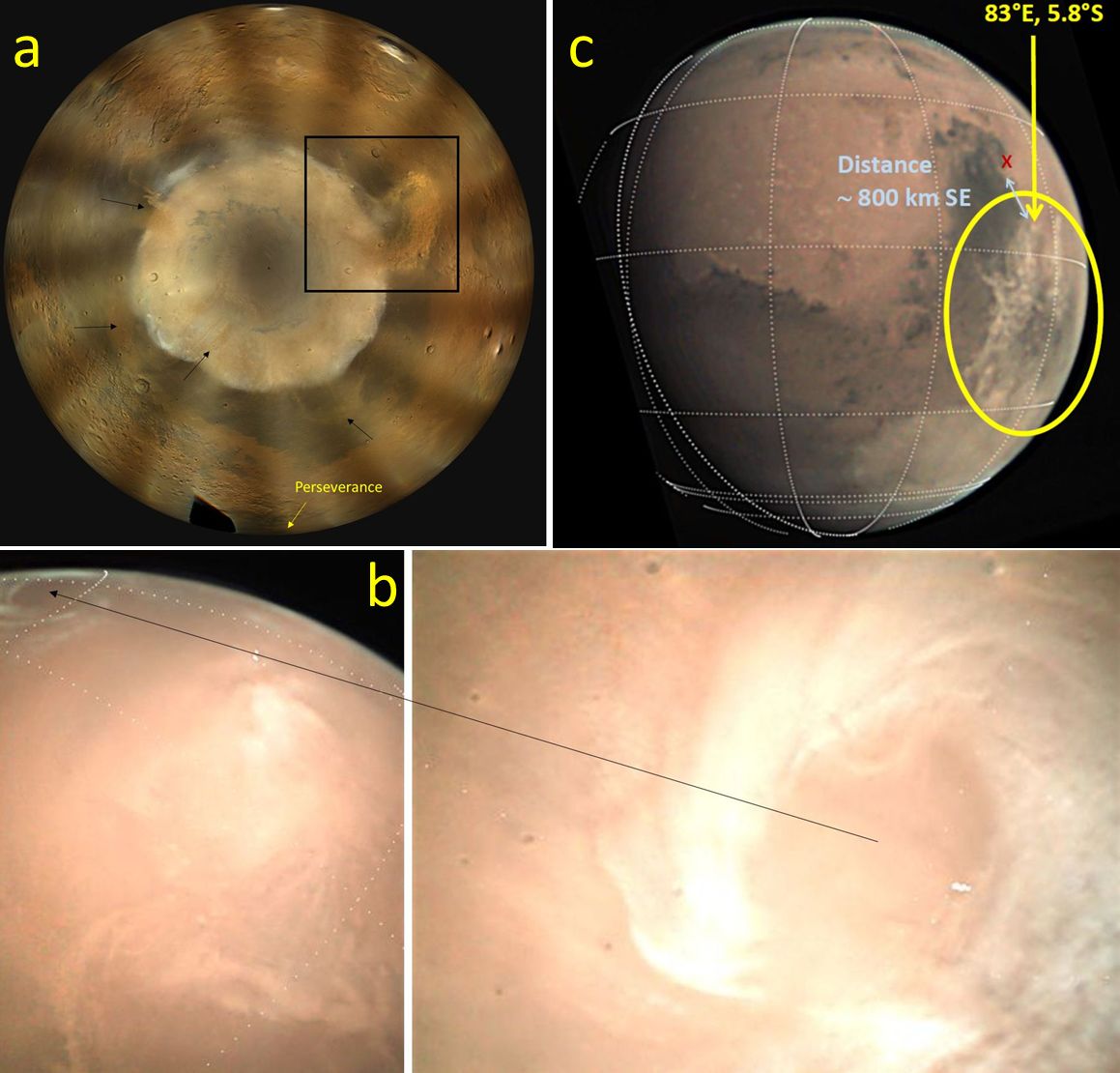- 1Universidad Pais Vasco UPV/EHU, Escuela de Ingeniería de Bilbao, Física Aplicada I, Bilbao, Spain (agustin.sanchez@ehu.es)
- 2Aula EspaZio Gela, Escuela de Ingeniería de Bilbao, UPV/EHU, Bilbao, Spain
- 3Planetario de Pamplona, 31008 Pamplona, Spain
- 4Red Astronavarra Sarea, Pamplona, Spain
- 5European Space Astronomy Centre, ESAC, Madrid, Spain
For the first time, four surface stations are currently operating on Mars, three rovers, Curiosity in Gale crater (4.6°S, 137.4°E; since 6 August 2012), Perseverance in Jezero crater (18.4°N, 77.5°E; since 18 February 2021), Zhurong in Utopia Planitia (25.1°N, 109.9°E; since 14 May 2021), and the platform Insight in Elysium Planitia (4.5°N, 135.6°E; since 26 November 2018) [1]. All these stations are equipped with a suite of meteorological sensors and cameras. For the first time, simultaneous data can be obtained on the meteorological magnitudes from the instruments onboard these stations allowing a comparative and complementary study of the global and local atmospheric dynamics of Mars. In addition, a battery of up to 8 orbiters are currently studying the planet [2]. In order to interpret and put in context the meteorological measurements at the surface by these stations, we present here a study of the atmospheric disturbances based of images of Mars obtained from cameras in two orbiters: the Visual Monitoring Camera (VMC) onboard Mars Express [3], and the MARCI camera onboard Mars Reconnaissance Orbiter [4, 5]. The period covered by this study extends from the arrival of Perseverance (February 2021) and up to the present with VMC images (Ls ~ 5° – 295°) and up to February 2022 with MARCI images (Ls ~ 170°).
We first report on the disturbances that evolved at the edge of the North Polar Cap (latitudes ~ 40°N to 70°N) during the springtime season in the northern hemisphere. These are dust storms and synoptic-scale cloud systems with arc, frontal, irregular and spiral shapes, typically growing from the baroclinic instabilities in the intense eastward jet present in this epoch of the Martian year, that leave their imprint in the surface pressure, temperature and winds [6] (Figures 1a-b). We also report on the evolution of the aphelion cloud belt (Ls ~ 0° – 180°) in the location of the surface stations. Finally, we present an analysis of dust storms that evolved at other latitudes, but taking particular interest in those that formed and evolved at the location of the stations, as was the case in early January 2022 when a regional dust storm impinged the Perseverance rover (Figure 1c).

Figure 1. Images of atmospheric disturbances: (a) MARCI polar map for 1 April 2021 showing dust storms at the edge of the North Polar Cap; (b) VMC image of the annular baroclinic cyclone in 3 November 2021; (c) VMC image showing a regional dust storm approaching Perseverance rover (red cross) in 4 January 2022 (SE = South East).
References
[1] Wikipedia: https://en.wikipedia.org/wiki/List_of_artificial_objects_on_Mars
[2] Wikipedia: https://en.wikipedia.org/wiki/List_of_Mars_orbiters
[3] Sánchez-Lavega, A. et al., Icarus 299, 194-205 (2018)
[4] Bell III, J. F. et al., J. Geophys. Res. Planets 114, E003315, 1-41 (2009)
[5] Ordóñez-Etxeberria, I. et al., in Mars Atmospheric Modelling and Observation, MAMO, Paris, 14-17 June (2022)
[6] Barnes, et al., The Global Circulation, in The Atmosphere and Climate of Mars (edts. R. M. Haberle, R. Clancy, F. Forget, M. D. Smith and R. W. Zurek), Chapter 9, pp. 228-294, Cambridge University Press, Cambridge, U.K. (2017)
How to cite: Sanchez-Lavega, A., Larsen, E., Hernandez-Bernal, J., del Río-Gaztelurrutia, T., Ordoñez-Etxeberría, I., Ordorika, J., and Cardesín-Moinelo, A.: Atmospheric disturbances imaged on Mars during the simultaneous operations of four surface stations along 2021 and 2022, Europlanet Science Congress 2022, Granada, Spain, 18–23 Sep 2022, EPSC2022-228, https://doi.org/10.5194/epsc2022-228, 2022.

